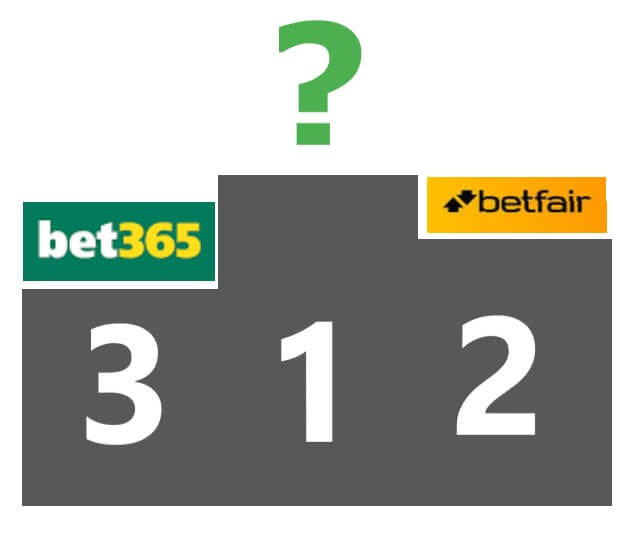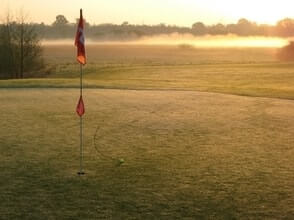AT&T Pebble Beach Betting Tips 2022
AT&T Pebble Beach Betting Tips 2022
Pebble Beach is a world-famous golf course known for its beautiful landscapes in Monterey California. And the AT&T Pebble Beach tournament is one of the classics. It attracts a lot of interest and a lot of betting action. But will it be profitable action? That’s what we’re here for.
At GolfForecast, we provide betting tips based on a unique algorithm. Many tipsters bet by looking at which players have performed well in the past, how players may perform in given weather conditions or how they perform on certain course sizes. This takes a lot of manual work each week – work that bookmakers spend a lot of time and money on.
The GolfForecast approach is to use the bookmakers hard work against them. This approach involves a series of calculations to determine where the value lays within the bookmakers. Our algorithm is focussed on safe consistent wins – we tip 22% of the field based on value, and strictly use e/w, giving you better odds of winning. Maybe not your style now, but we’ve converted many punters over the years.
Given members pay to access all 22% of the tips, have their budget evenly distributed based on their bank roll and get their bookies picked based on their active accounts, we’ll only be releasing our top tips and the top bookmakers in this article. You can access the whole selection of tips for just £1 by clicking here. Let’s get into it.
Top 5 players in order of value + best bookmaker to use for each one.
- Matthew Fitzpatrick @ 40/1 William Hill 8 @ 1/5
- Christiaan Bezuidenhout 55/1 Bet365 5 @ 1/4
- Mackenzie Hughes 50/1 Skybet 8 @ 1/5
- Denny McCarthy 75/1 Betfair exchange 1 @ 1/1
- Tom Hoge 60 /1 Skybet 8 @ 1/5
Let’s dive into the math behind these tips:
Let’s say there are 4 players in a tournament, each with an equal chance of winning, that means each has a 25% chance or 3/1 odds. A bookie will change these odds to 2/1 in order to make a profit on the event no matter what the outcome. Between Monday – Thursday, bookies will adjust these odds based on demand. A bookie may increase a player’s odds from 2/1 to 4/1 to encourage more bets – this implies the player has a 20% chance, when the true odds are still 25%. There is a 5% difference in additional value that our algorithm uncovers.
Let’s break down the steps.
- The Golf Forecast algorithm forecasts a percentage prediction for each player based on available player data (past 3 years - present). This would include data like historical course data and weather.
- We then gather odds and each way terms to determine the bookie offering the best value for each golfer.
- We then determine 'Normalized Bookies Odds' which is what the bookies actually think. It is calculated by taking the best value odds for each golfer available and normalising them so they sum to 100%. (Essentially, it’s the value of the market if the bookies were to not profit).
- The algorithm then finds ‘Normalized effective value’ (the real value for individual each bet). This allows the algorithm to identify which bets are truly undervalued.
- Our final tip is determined by the difference between our algorithm’s prediction and the effective value, therefore leaving users with the true value for each bet – giving the best odds.
On the AT&T Pebble Beach Pro-Am there are 155 golfers. If you took the best odds for every player, put them into a percentage, and formed a total, you’d get 109.3%. This means that if you bet on every single player to win outright, using the best available odds, you’d still loose 9.3%. Now let’s do this with e/w terms, which are known to have better value. Putting every set of odds into a percentage and summing them up, you’d get -97.8%. This means that if you bet on every single player using the best available odds and e/w terms, you’d make 2.2%. For a tournament to be in the negatives isn’t very common, and making 2.2% isn’t worth the time or return. So, let’s look into using this data to find the highest value players.
There are a few things to look at – we’re going to use Matthew Fitzpatrick as our example, who has odds of 40/1.
- The implied percentage (the odds made by a bookmaker in the form of a percentage). 2.44%
- The normalised percentage (the odds made by a bookmaker in the form of a percentage if they were to break-even). 2.09%
- The predicted percentage (the odds made by our algorithm in the form of a percentage). 2.31%
- The discrepancy percentage (the difference between our algorithms prediction and the normalised percentage). 2.31% - 2.09% = 0.22%
We do this for every player in the field, compare the data and tip the ones with the highest value. Here is an example of finding value between 2 players with the same odds.

As seen above, we have Tom Hoge and Brain Harman – both 60/1. At face value, they’re equal in value, but with the calculations, you’ll see that Hoge has a discrepancy of 0.71% compared to Harman’s -0.62%, a big difference. We do this comparison for every player, but exclude long shots with odds over 150/1. The odd time we tip a favourite is when value is found.
Today, we covered the top 5%. Every stat involved in these calculations is crucial. We’ve spent years tweaking our predicted percentage calculations and have found one that produces consistent results for our algorithm. Our algorithm does these calculations based on available bookie data, which automatically updates so our members can bet with the highest value tips at that given time.
If you’re comparing the tips above to a bookmaker, and they’re slightly different, don’t be concerned, it’s simply because this article was written based on data at that time. They’re still high value tips, just not fully optimized. To view our fully optimized tips for £1 click here.




